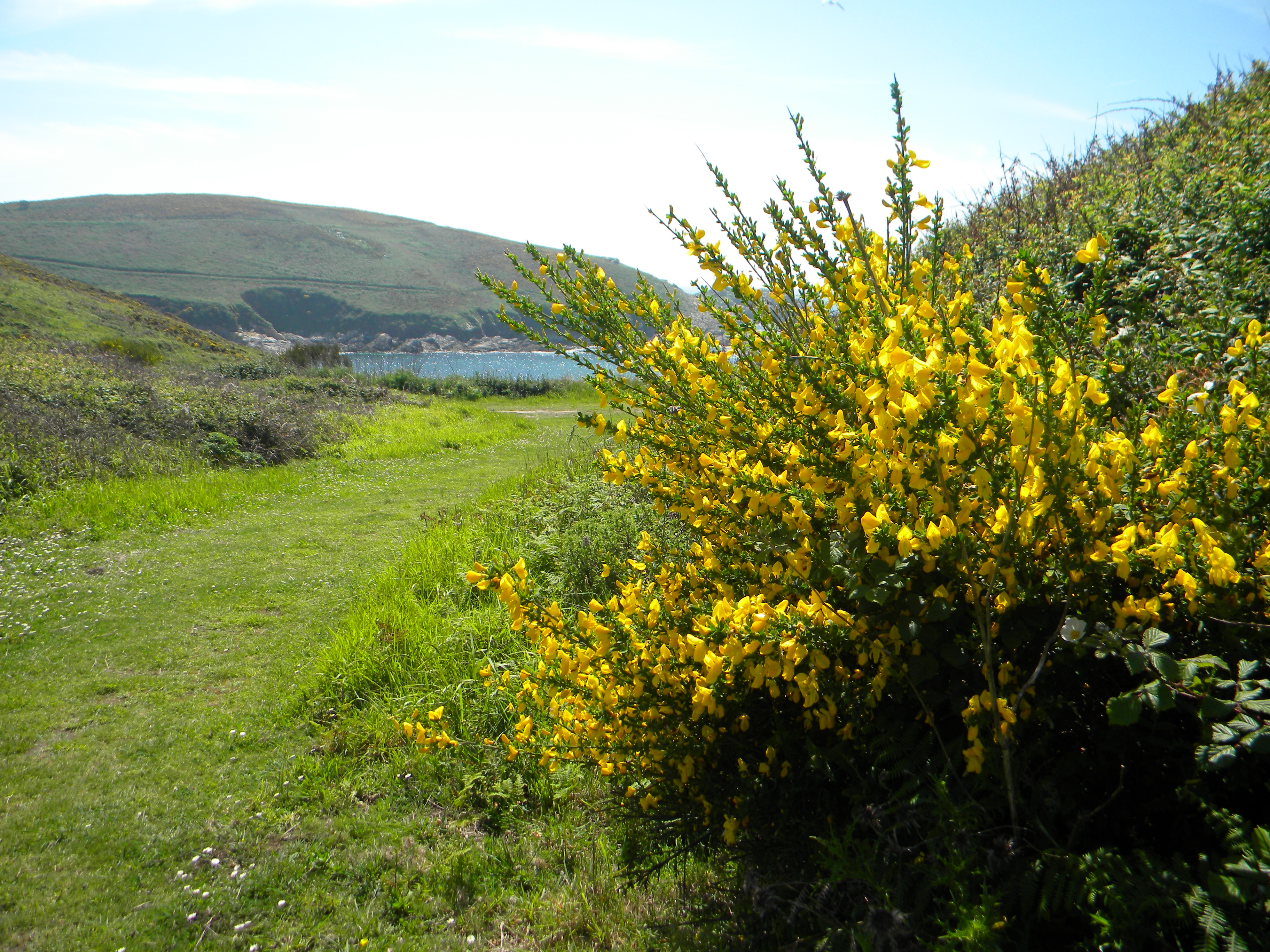STOP 8: ENSEADA DE CANIVELIÑAS E PUNTA DAS XESTAS (self-guided route The Names of the Island)
If you prefer, you can download the complete self-guided route leaflet in PDF format HERE. ![]()
The brooms (xestas) of Ons are part of the world the islanders captured in their place names.
This cove is called Caniveliñas, named after the reeds (canas) that grow here near a freshwater spring. The point that marks its right-hand side is known as Punta das Xestas, due to the abundance of broom bushes (in Galician, xestas)
The broom bushes found along the cliffs of Ons form the largest population of a species endemic to the Atlantic Islands and nearby coasts: Cytisus insularis, commonly known as the xesta de Ons. If you look around, you might spot an individual of this unique species, which likely evolved due to the effects of insularity. Perhaps because it is such a distinctive part of the island’s landscape—or due to its traditional use to ward off the evil eye— broom bushes have become part of the island’s cultural heritage through place names.
From here, you can return to the starting point of the route, continuing to follow the wooden posts with the green stripe until you reach O Curro once again.
We hope you enjoyed this itinerary and that it helped you discover some of the natural and cultural treasures hidden within the Atlantic Islands Maritime-Terrestrial National Park—not only on the islands themselves, but also in the surrounding waters and among the people who still call them home.
We invite you to learn more about the National Park by exploring the marked trails shown in the leaflets or by joining one of the guided tours. Ask at the information points in O Curro.

